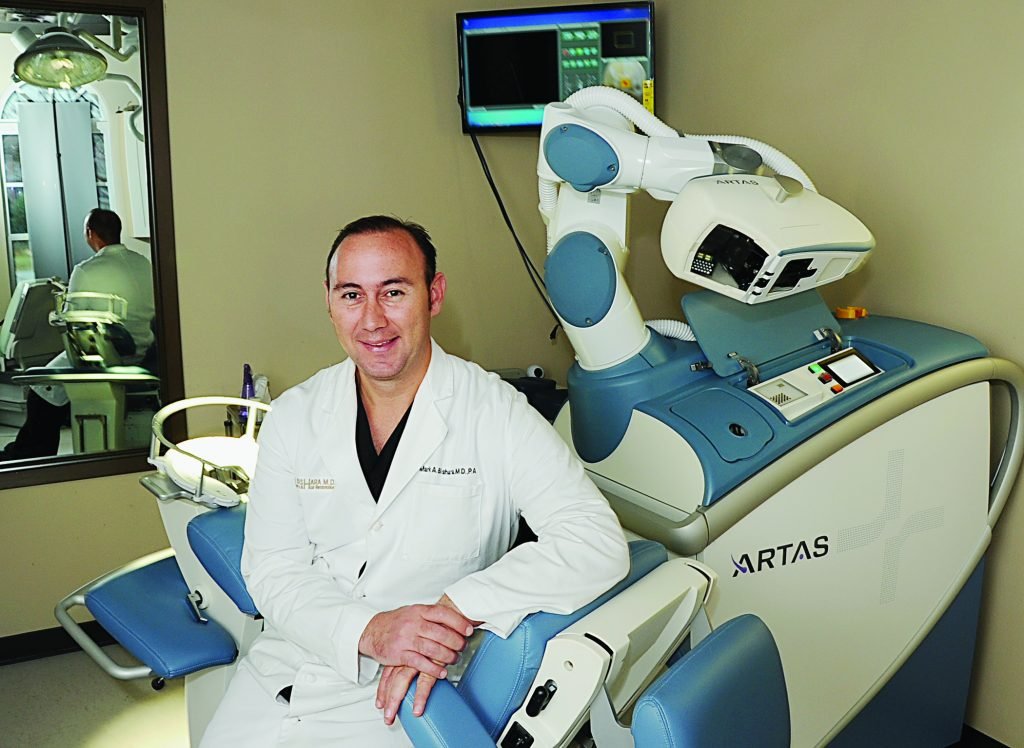Hair transplant surgery has come a long way since it was first introduced in the 1950s. Back then, Dr. Norman Orentreich started testing a theory that hairs located at the sides and back of the head were genetically “programmed” to resist balding and that when relocated to balding areas, these “donor hairs” would retain this characteristic. It was an idea that was, quite literally, ahead of its time because while the theory was sound, the available surgical techniques were too crude to produce consistently natural-looking results.
The Bad Old Days of Hair Transplantation
In the 1960s and 1970s, hair transplants consisted of removing clumps of donor hairs with a round punch and then transplanting these plugs of hair into regularly spaced rows. Sometimes, if the patient had enough donor hair and dutifully completed all the sessions of hair transplant surgery, a doctor might be able to achieve good coverage, albeit with a very solid-looking hairline and limited ways the patient could style his hair. Too often, however, the patient would run out of donor hair before a good result could be achieved and the result would be the dreaded “doll’s head” look with obvious, evenly spaced plugs of hair. For an entire generation, the words “hair transplant” became virtually synonymous with “hair plugs” and many people, quite understandably, preferred to live with their hair loss than get an obvious-looking hair transplant.
When It Got Better
In the 1980s, hair transplant technique took a giant leap forward with the introduction of smaller grafts. Instead of large plugs of hair, surgeons would excise a strip of hair from a balding-resistant patch and section it into two types of grafts, mini grafts (4-8) hairs and micro grafts (units of 1, 2, and 3 hairs). The mini grafts were placed where fullness was desired and the micro grafts were places along the hairline for a more natural look. More grafts could be transplanted in each session than when surgeons used the “punch” technique and the results were definitely better looking.
When It Got Great
In the 1990s, we finally achieved a truly natural-looking hair transplant method called Follicular Unit Transplantation or Follicular Unit Grafting (FUG) that mimics the way hair naturally grows. The introduction of a new and powerful microscope, called the binocular microscope, made it possible for surgeons to take that same strip of donor hair and section the hairs the way they naturally grow, in units of 1, 2, 3, and 4 hairs. These “follicular units” can be transplanted into very tiny incisions placed very closely together. The result is excellent density, even after just one session. And because the hair is transplanted the same way it grows, there’s never an awkward phase where the patient looks strange or like a work in progress.
A further refinement of the technique, called Follicular Unit Extraction (FUE) does away with the strip. Instead, these follicular units of donor hair are removed one at a time using a small circular punch. There is no incision with FUE and the minimally invasive procedure leaves no visible scars. The donor hairs are placed the same way they would be with FUG and the results of both types of procedure are completely natural. When performed by an accomplished surgeon — no one will know that you’ve had a hair transplant.
Hair restoration product literature, including Propecia information, is available in our office. Please contact us at 817.473.2120 to schedule an appointment or visit our website at www.MarkBisharaMD.com





